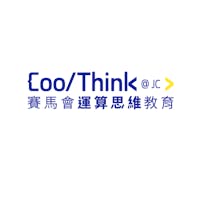In 2015, the Hong Kong Jockey Club Charities Trust set out to develop a computational thinking (CT) and coding education initiative of world-class standard, based on up-to-date teaching tools and proven pedagogy. Funded by the Trust, in partnership with the Education University of Hong Kong, Massachusetts Institute of Technology and City University of Hong Kong, CoolThink@JC was created as a free, basic education for all students, designed to be implemented in mainstream curricular and formal computing lessons.
Since that time, CoolThink@JC has won multiple awards and gained recognition on the international education stage. And in a clear demonstration of its potential and early success, the program earned ISTE’s Seal of Alignment in 2021, obtaining full scores in the categories of Innovative Designer and Computational Thinker.
Recently, we spoke with Marjorie Yang, Chairlady of CoolThink@JC’s Steering Committee, to learn about the past, present and future of the program and discuss its impact in Hong Kong and beyond.
EdSurge: What inspired the creation of CoolThink@JC?
Yang: We were first prompted to address concerns over the digital divide. Not every student has an equal opportunity to learn modern, basic technology that is essential to lucrative careers, such as in STEM fields. We want to close the wealth gap. And we want to close the digital divide. We want everybody to feel comfortable with technology. I think it is up to every one of us as users to understand technology, to master technology and to increase the benefits of technology for all of us.
This goes hand-in-hand with the concept of future readiness. Technology has undoubtedly changed every aspect of our lives. Yet, some sectors—including the education ecosystem— haven’t kept pace with the rapid change. We urgently need a comprehensive and modern curriculum, which thoughtfully incorporates edtech, along with a scalable and practical teacher development program to build a sustainable learning ecosystem that supports future generations.
And finally, we want to promote computational thinking education, rather than simply STEM or coding. We strongly believe that CT—as a thought process, such as logical thinking, problem solving and creativity—is more important than technical skills at a young age. Students should be thinkers and creators who turn ideas into actions with empathy, not mere consumers of technology. CT is an essential and critical 21st-century skill.
And this goes beyond simply embedding computational thinking into a curriculum; it’s really about empowerment. Initially, this idea seemed to apply only to our students. But as we went on with the whole project, we realized that this also applied to parents and teachers, which is critical. I think this is why CoolThink has become so relevant.
Let’s discuss that idea further. How is your program supporting each of the various stakeholder groups across the education landscape?
We’ve developed a comprehensive and flexible curriculum intended for mass adoption. Educators from all backgrounds can choose the units they find most appropriate and customize them to fit the needs of their students.
CoolThink brings along a lot of pedagogy changes: flipped classrooms, teamwork, peer learning. And this isn't just penetrating the students; it’s also changing the mindset of the teachers. It’s very interesting to hear testimonies of some of the teachers who’ve gone through the CoolThink experience. It changed their whole style of teaching.
If we're going to change education, if we're going to change the students, then we've got to change the mindset of the teachers. We have to empower the teachers. We need to have a generation of teachers who are going to teach differently, encourage innovation and feel comfortable when students ask questions that they don't know the answer to.
So, now we have peer learning for the teachers, allowing them to share their experiences. We also offer modularized teacher training courses. Teachers can choose the best option for them to enhance their confidence in teaching CT classes. Our surveys reflect that over 90 percent of teachers who completed this professional development were confident in teaching CT lessons in their schools and willing to recommend CoolThink to other schools. Successful professional development creates a sustainable teaching capacity inside the school system.
This allows us to really focus on learning outcomes for CoolThink students. We engaged SRI International to conduct a rigorous, independent, three-year-long evaluation on students’ learning outcomes regarding CT concepts, practices and perspectives. The report concluded that CoolThink students significantly outperformed their peers in other schools. This promising result gave us confidence to continue scaling our CT education to reach a critical mass of adoption.
Students are actively engaged in the program, inside and outside of the classroom. But as I mentioned, we also believe that parental participation is important to our project. Hence, we launched a series of computational thinking parent workshops to provide a platform for parents and their children to learn programming (Scratch) together. Parents master computational thinking skills while communicating and cooperating with children through interactive activities.

What's next for CoolThink@JC?
We aim to focus our strategic efforts on achieving results in a few specific areas. We’ll expand the coverage of our school network to reach a tipping point where adoption of effective CT education becomes a mainstream practice. PD will be scaled to build teacher capacity for the whole primary education sector. We’ll optimize the CoolThink Model to help schools address diversity in student learning and connect classroom learning with daily lives and news, such as the advancement of artificial intelligence. And we want to empower all primary schools to embrace, sustain and evolve our mission with available resources and policy frameworks in the education sector.
And you see, I come back to empowerment again. CoolThink is embedding a sense of empowerment in these little kids. We need to maintain this effort throughout the entire education stream. I think we should embed empowerment in our whole population.
This has been a fantastic journey for me to witness. As a chairperson, I get to see all the benefits, and it's wonderful. I think CoolThink came at just the right time, when the world is talking a lot about innovation and entrepreneurship. The program is not simply about training students to become coders; it's the underlying sense of empowerment that is most valuable.
The successful implementation of computational thinking education begins with the development of a strong evidence base. And its sustainability relies upon public-awareness building and partner management. Hong Kong Jockey Club Charities Trust’s dedicated central coordination team manages an ecosystem of partners—including Massachusetts Institute of Technology, Education University of Hong Kong and City University of Hong Kong—and organizes public events, promotions and strategic communications to reach target stakeholders. CoolThink@JC is grateful for the Trust’s thought leadership and investment in high-quality and needle-moving edtech initiatives, which are designed to prepare the next generation for a productive and prosperous future.



